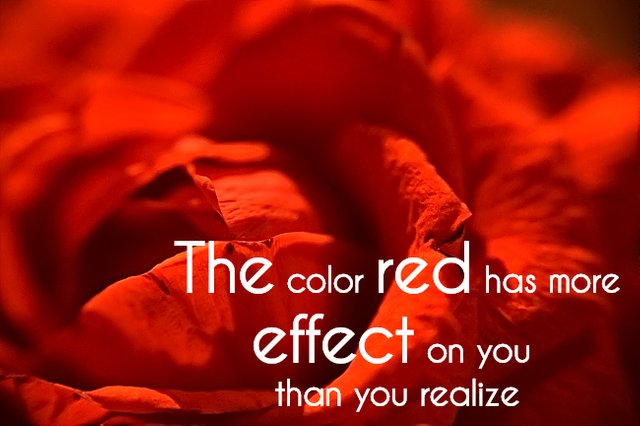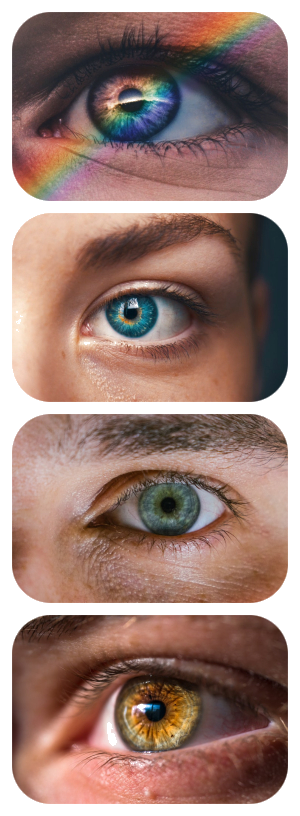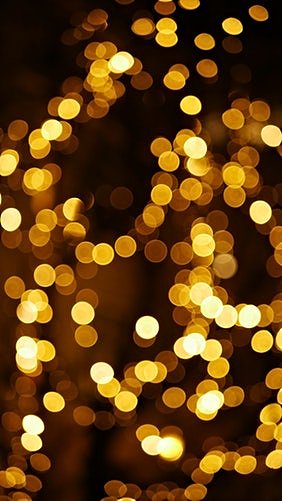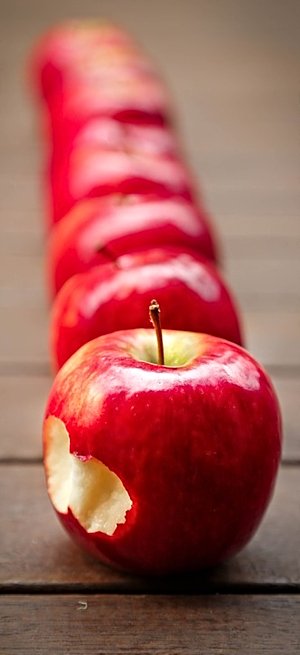Ever since Isac Newton first held up a prism and refracted white light into a rainbow of colors (the 1660s), we have been obsessed with colors and how they impact us. Marketing experts are well aware of every single research on color impacting our cognitive abilities, why shouldn't you be? Color comes in the form of electromagnetic waves and what you see is the color that is not absorbed by an object you are looking at but instead reflected into your eye. Did you think that colors have only visual effect on you? Oh... You have much to learn young Jedi...
…if the Sun’s Light consisted of but one sort of Rays, there would be but one Colour in the whole World…
–Sir Isaac Newton, Opticks

CC0 image, Pixabay, author: Mimzy, adapted
We have monkies to thank for our abilities to see different colors. Some 34 million years ago, when monkeys evolved from primitive lemurs and lorises (only saw green and blue), their cones became sensitive to shorter wavelengths of color and started to see red. That is where our story about red starts, with monkies. Their ability to recognize ripe red fruit is how humans ended up with color vision. Since then, the meaning of red has not only evolved culturally but we have also begun to understand the non-visual effects of color.


Cones are light-sensitive cells in our retinas. When light shines on them, they send electrochemical signals primarily to the visual cortex where the visual images are formed. I bolded that word primarily for a reason. Some retinal ganglion cells respond to light by sending signals to the hypothalamus and it plays no part in forming visual images. Hypothalamus is responsible for the secretion of hormones which control many aspects of the body's self-regulation from temperature, sleep, and hunger to circadian rhythms. The inhibition of melatonin is brought to you by the hormone cortisol which is released after exposure to blue/green light in the morning and its release into the bloodstream that make us sleepy at night happens because the amount of blue light in sunlight is reduced.
Retinal cells sensitive
to the short wavelengths?
 Collage of CC0 images from Unsplash 1, 2, 3, 4
Collage of CC0 images from Unsplash 1, 2, 3, 4The retinal cells that form those non-image-forming visual pathways between eye and hypothalamus are selectively sensitive to the shorter wavelengths of the visible spectrum; blue and green. There is a physiological mechanism through which color and light affect mood, heart rate, alertness, impulsivity, and other things in our bodies. This is the reason why there is so much talk about how exposure to tablets, phones, and other screens have a negative effect on our sleep patterns. It is because they emit amounts of blue/green light at the wavelengths that inhibit the release of melatonin.
Who knew that physics could get challenged by a writer? Interestingly, Johann Wolfgang von Goethe, best known for his poetry and prose, considered his Theory of Colors to be his most important work. He challenged Newton's views on color and argued that color was not simply a scientific measurement, but a subjective experience perceived differently by each individual viewer. Little did Goethe know that both him and Newton were correct. Remember that black or gold dress that people saw differently? That is because the cones in our eyes are not the same nor do we all have the same number of them.
Our ability to see colors is the KEY to understanding the Universe. Spectral analysis is a method that led to the discovery of new elements and paved the way to quantum theory. Light, or color to be more precise, is the fingerprint of any element. When you burn a pure metal and then look at it through a spectroscope, each element will give off a unique spectrum. That is how we are able to learn what elements are there in the Universe.


I already told you that light is made up of wavelengths. Every wavelength is a particular color and depending on which ones land in our eyes, we see a red rose or a blue ocean. All of those colors are in the visible spectrum of electromagnetic radiation, from 400 nm (violet) to 700 nm (red) of the wavelength that our eyes can detect. White light from the Sun is polychromatic because it contains all those previously mentioned wavelengths while lasers are monochromatic because they produce only one color.
The University of Leeds and
their lighting laboratory...
Stephen Westland leads the Experience Design research group at the University of Leeds where he has a lighting laboratory designed to evaluate the effect the light has on human behavior and psychology. They have a unique lighting system that can flood a room with colored light of any specific wavelength. They have found that light can have an effect on heart rate and blood pressure which was later corroborated by a study in Australia. You can read the paper about it here:
The influence of color on student emotion, heart rate, and performance in learning environments by Aseel AL‐Ayash, Robert T. Kane, Dianne Smith, Paul Green‐Armytage
The discovery of the non-image-forming visual pathway has opened doors to various research that explores how people respond (physiologically and psychologically) to colors around us. It is still hard to separate actual facts from intuition or traditions when it comes to how colors affect us but science has been shedding some light on the topic (all pun most definitely intended).


I did say how it all started with monkies so let's get back to them again. Cleo M.Stoughton and Bevil R.Conway looked at how the monkey brain reacts to the four unique hues that make up our vision back in 2008. They used brain imaging and found that specific regions of cells in the monkey brain reacted to each of these hues distinctly. Some of those areas were more sensitive to certain hues than others. Neurons in the visual areas of the brains were more sensitive to red than any other color. You can read about the research here:
Neural basis for unique hues by Cleo M.Stoughton and Bevil R.Conway
Red always has the biggest response
Wherever you look in nature, you will see how red is the most dominant color. When it comes to animals, it is associated with dominance and high testosterone in males and we even turn red in our faces when we get angry. Evolutionary biology tells us how we have evolved to be switched on to the color red not only for sexual purposes but for staying alive. There was a research back in 1994 from UCLA which looked at the effect of different colors on emotional reactions. Findings are quite interesting. Blue and green were always the most pleasant colors, and yellow was the most unpleasant. What is surprising is that green-yellow was the most arousing and induced more dominance while red was the least arousing color. This became a huge contradictory and has been a stick in the eye when it comes to other scientific research on color. You can read about it here:
Effects of color on emotions by Valdez P, Mehrabian A.
The thing is, if you want something to stand out, red is definitely the color to use but if you want it to be pleasant, calm, or nice, choose blue or green instead. Red does stand out but not always positively. We have only recently been using red as a "girl color". Throughout history, red was actually considered a dominant male color and almost all war sigils had it. It was the color of war, aggression, and blood and how it became feminine is beyond me. In ancient Rome, leaders were called coccinati which literary means "wearing red". Historically and culturally speaking, green is the female color and red is male.
The Color of Sexual Attraction
"Were you listening to me, Neo? Or were you looking at the woman in the red dress?"
-Morpheus character from the movie Matrix
Science has revealed many secrets about human attraction. Statistically, men are attracted to signals of youth in a female and the 'hourglass' figure while women look for physical manifestations of testosterone (a strong chin, broad shoulders, deep voice). All this is pretty self-explanatory from the standpoint of evolutionary biology. Many studies, however, point to another fundamental source of attraction, the color red. If I start naming things such as red wine, red lips, red dress, red roses etc. you would probably connect them with passion and/or eroticism. I do not blame you. It is a cultural thing and a neurobiological. You can read about a particular study about women responding to red here:
Red, rank, and romance in women viewing men by Elliot AJ, Kayser DN, Greitemeyer T, Lichtenfeld S, Gramzow RH, Maier MA, Liu H.
When we take a look at all the research so far, the effect of the color red is significant, unique, and it operates at a sub-conscious level. The interesting thing is it is experienced as attraction booster by both sexes. Here are some studies that you could take a look at:
Romantic red revisited: Red enhances men's attraction to young, but not menopausal women by Sascha Schwarz, Marie Singer
Sexy red: Perceived sexual receptivity mediates the red-attraction relation in men viewing woman by Adam D.Pazda, Andrew J.Elliot, Tobias Greitemeyer
Color and Women Attractiveness: When Red Clothed Women Are Perceived to Have More Intense Sexual Intent by Nicolas Gueguen
In all of those studies that I have given you and in the most of the ones that are out there, people who participated had no idea that that color had been a factor in their rating decisions. They even failed to guess the purpose of the experiments which leads us to believe that the link between the color red and sexual attraction is strongly rooted in our subconscious and still not entirely known. I would say that it has a lot to do with conditioning, social traditions, and acquired habits but then again, I would say that about most things. Psychology and biology are my frequent "go to" answers to most of the "why" questions.
My conclusion? From everything that I have found out about this color, I would say that it is unique, significant and rooted as a sexual signal in our subconscious as a result of our biological heritage. It definitely has aesthetic value and a psychological meaning with a high potential to affect our behavior and sexual feelings. Any thoughts on this?
To learn more about this topic, check out these REFERENCES:
Why Red Is Such a Potent Color from livescience.com
from library.si.edu
Perspective: Casting light on sleep deficiency from nature.com
Perception Lecture Notes: Retinal Ganglion Cells from cns.nyu.edu
Colours of light from sciencelearn.org.nz
Here's How Colours Really Affect Our Brain And Body, According to Science from sciencealert.com
How the Color Red Influences Our Behavior from scientificamerican.com
The fascinating neuroscience of color – And what it means for design" from canva.com
Red Alert: Science Discovers The Color of Sexual Attraction from psychologytoday.com

Until next time,
KEEP YOUR SMILE ON!



Image sources AND LICENCES in order of appearance:
- all images used in this post are free for commercial use, they are royalty free with the links to original images provided under them
- titles are made with the CC0 image from Pixabay that can be found here
- line divider that I use is from FREE CLIPART LIBRARY, and is here
- my bitmoji avatar was created on https://www.bitmoji.com/, visit the site to create yourown
PROUD MEMBER OF:


@steemitbloggers
























This post has been voted on by the SteemSTEM curation team and voting trail in collaboration with @utopian-io and @curie.
If you appreciate the work we are doing then consider voting all three projects for witness by selecting stem.witness, utopian-io and curie!
For additional information please join us on the SteemSTEM discord and to get to know the rest of the community!
Your support is very much appreciated, thank you and much love! 💚
Another amazingly thorough post from you @zen-art! It's no wonder that color therapy is something we should look at with regards to decor. I've got splashes of red in my living room, just love it, so although it's an erotic colour I would not have a red bedroom especially in our subtropical climate, would be way too hot ;)
Thank you for the energy & research you put into your posts!
Thank you honey, I am glad you like the post. I am not sure if I would like to have red in the bedroom, I prefer more gentle colors :)
I think there is 100% a gap between what physics/science explains and the dichotomy of how we perceive the world through the lens of human psychology. Color, and how we are effected emotionally by it, is a prime example of this.
Science can only explain it based on instinctual prerogative, when we became more than animals a huge part of our learned experience spread into a shared consciousness that science can't explain... yet.
Red is quite a prime color during Xmas, so this is an appropriate topic!
Now, whether or not Santa is trying to appeal to the ladies by wearing red, that needs further probing!
Funnily, I read an article about blue lights sin the Japanese metro that were set to prevent Japanese people from committing suicides there. Colors definitely affect us a lot!
PS: The red chili in your signature.... ;)
I read about that too while I was making this post and it almost made it in :) UK followed that example and there are several stations there too that implemented that kind of lightning. There was even a study about it but I can not remember what was the conclusion of it when it comes to numbers.
It was either chili or Santa :D
This story was recommended by Steeve to its users and upvoted by one or more of them.
Check @steeveapp to learn more about Steeve, an AI-powered Steem interface.
Hi @zen-art!
Your post was upvoted by Utopian.io in cooperation with @steemstem - supporting knowledge, innovation and technological advancement on the Steem Blockchain.
Contribute to Open Source with utopian.io
Learn how to contribute on our website and join the new open source economy.
Want to chat? Join the Utopian Community on Discord https://discord.gg/h52nFrV
Thank you for your amazing support! 💚💚💚
That was a pretty interesting read... I remember being blown away by the blue and gold dress, because I had always assumed it didn't matter how we perceived the colours as long as we used the same labels consistently between people. How wrong I was...
Nice flaming farting chili pepper costume!
That dress was behind many fights between me and my hubby :D Chili costume is awesome, I know. Thanks for the nice comment and for the support 💚
My wife thought I was lying and making it up when I told her I saw the other colour...
I like a bit of red now and again, most especially in photography as it's a strong colour
It can be pretty awesome in photographs especially with a big contrast to other ones.
We are SO proud to have you as a member of our
FANTABULOUS @steemitbloggers family!
uvoted and resteemed!
❤ MWAH!!! ❤
interested in joining the Steemit Bloggers Community?
MWAH to you too 💚